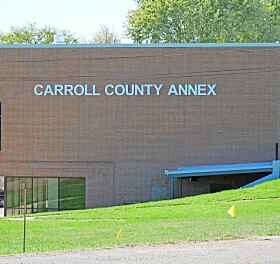Local craftsman-artist brings historic vehicles to life
By Thomas Clapper
FPS Staff Writer
For local artist and creator Jim Carlton, the past does not have to remain in a photograph or a history book. The past can be brought to life — to see, to touch, and, in this case, to drive.
Carlton has handmade historical vehicles, including Gottlieb Daimler’s 1885 Petroleum Reitwagen from a photograph, Karl Benz’s 1888 tricycle, a 1905 custom horseless carriage, and more — with more to come.
“I call myself a woodworker,” said Carlton. “I think I can call myself a woodworker, and I call myself a metalworker too. Before I moved here from Brunswick, I fell in with some craftsmen that were unbelievable up there, and they’re still my best friends. One was an impeccable woodworker, like I’ve never seen, and another was a metalworker like I’ve never seen, and I was the artist. So, I could take their engineering stuff and turn it into reality.”
It was with these craftsmen that he helped build the first-ever model of a prototype of Gottlieb Daimler’s 1885 Petroleum Reitwagen. The original burned down in 1903, and no originals exist today. This replica was made only from a photograph. The creation is now in the AMA Motorcycle Hall of Fame Museum in Pickerington. Carlton has built three additional replicas of this on his own.
The Petroleum Reitwagen is considered the first internal combustion vehicle, which eventually led to engine-powered motor vehicles.
Moving on in the timeline, Carlton built an 1886 Benz tricycle created by Carl Benz, known for founding Mercedes-Benz. Benz improved the design in the following years, and Carlton’s version is based on the improved model. The replica captures the spirit and look of the tricycle, but due to the uniqueness of hand-building — and the fact that Benz had several variations.
“The first version was constructed in 1886, around the same time as Daimler’s motorcycle,” said Carlton. “There’s mention of a debate over which invention came first, but it’s established that Daimler was first.”
The horseless carriage was a custom creation to celebrate and pay homage to the brass-era cars from around 1900-1905. It still resembles a horse-drawn carriage but was built using elements common to the transitional era in automotive history. It is from a time when there was no established place for the steering wheel.
“Now people are going to tell you Henry Ford made the first car, which isn’t true,” said Carlton. “He started the first assembly line for vehicles.”
These vehicles took him about a year and a half each to make. This involved cutting the pieces of steel, shaping the wood, making custom fenders, brackets, sprockets, and every other part on these machines.
“I don’t think I invent things if God didn’t give me or you our skills or ideas,” said Carlton. “I put a lot of work into things, whether it’s learning an instrument or building something like this. I hope people can look at it and realize that they can put the work in too. A lot of people say they would like to do something, but they are tired or do too much work, but you have to work through all of that.”
Carlton lives in Carrollton with his wife of 52 years, Juani, whom he met in Spain in 1970. They have two children.




























































